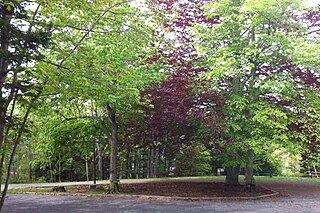
Joseph Howe was a Nova Scotian journalist, politician, public servant, and poet. Howe is often ranked as one of Nova Scotia's most admired politicians and his considerable skills as a journalist and writer have made him a provincial legend.

Events from the year 1769 in Canada.

Events from the year 1773 in Canada.

Events from the year 1775 in Canada.

Events from the year 1786 in Canada.

Events from the year 1787 in Canada.

William Johnston Almon was a Nova Scotian physician and Canadian parliamentarian. He was the son of William Bruce Almon.

John Howe was a loyalist printer during the American Revolution, a printer and Postmaster in Halifax, a spy prior to the War of 1812, and the father of Joseph Howe a Magistrate of the Colony of Nova Scotia. He was born in Boston, Massachusetts Bay colony, the son of Joseph Howe, a tin plate worker of Puritan ancestry, and Rebeccah Hart.

Alfred Gilpin Jones, was a Canadian businessman, politician, and eighth Lieutenant Governor of Nova Scotia.

St. Paul's Church is a historically evangelical Anglican church in downtown Halifax, Nova Scotia, within the Diocese of Nova Scotia and Prince Edward Island of the Anglican Church of Canada. It is located at the south end of the Grand Parade, an open square in downtown Halifax with Halifax City Hall at the northern end.

The Old Burying Ground is a historic cemetery in Halifax, Nova Scotia, Canada. It is located at the intersection of Barrington Street and Spring Garden Road in Downtown Halifax.
Edmund Mortimer McDonald was a Nova Scotia journalist, publisher and political figure. He represented Lunenburg in the House of Commons of Canada as an Anti-Confederate and then a Liberal-Conservative from 1868 to 1872.
John Bushell was the first printer in what is now Canada.

By the arrangements of the Canadian federation, the Canadian monarchy operates in Nova Scotia as the core of the province's Westminster-style parliamentary democracy. As such, the Crown within Nova Scotia's jurisdiction is referred to as the Crown in Right of Nova Scotia, His Majesty in Right of Nova Scotia, or the King in Right of Nova Scotia. The Constitution Act, 1867, however, leaves many royal duties in the province specifically assigned to the sovereign's viceroy, the lieutenant governor of Nova Scotia, whose direct participation in governance is limited by the conventional stipulations of constitutional monarchy.

William Henry Dennis was a Conservative and Progressive Conservative party member of the Senate of Canada. He was born in Colchester County, Nova Scotia and became a printer and publisher.

Hugh William Blackadar was a newspaper printer and publisher from Halifax, Nova Scotia.

Nova Scotia is a Canadian province located in Canada's Maritimes. The region was initially occupied by Mi'kmaq. The colonial history of Nova Scotia includes the present-day Maritime Provinces and the northern part of Maine, all of which were at one time part of Nova Scotia. In 1763, Cape Breton Island and St. John's Island became part of Nova Scotia. In 1769, St. John's Island became a separate colony. Nova Scotia included present-day New Brunswick until that province was established in 1784. During the first 150 years of European settlement, the colony was primarily made up of Catholic Acadians, Maliseet, and Mi'kmaq. During the last 75 years of this time period, there were six colonial wars that took place in Nova Scotia. After agreeing to several peace treaties, the long period of warfare ended with the Halifax Treaties (1761) and two years later, when the British defeated the French in North America (1763). During those wars, the Acadians, Mi'kmaq and Maliseet from the region fought to protect the border of Acadia from New England. They fought the war on two fronts: the southern border of Acadia, which New France defined as the Kennebec River in southern Maine, and in Nova Scotia, which involved preventing New Englanders from taking the capital of Acadia, Port Royal and establishing themselves at Canso.

The Little Dutch (Deutsch) Church is the second-oldest building in Halifax, Nova Scotia, Canada, after St. Paul's Church. It was built for the Foreign Protestants, and is the oldest site in Canada associated with Lutheranism. It is a National Historic Site of Canada.

St. Aspinquid's Chapel was established by Priest Louis-Pierre Thury at Chebucto in the late 17th century. The chapel is a natural stone amphitheatre located by Chain Rock Battery on the Northwest Arm at Point Pleasant Park. There are numerous notable people interred in the burial grounds around the chapel and it is also the location of the Mi’kmaq celebration of the Feast of St. Aspinquid, which was conducted through much of the 18th century. During the French and Indian War two Mi'kmaw chiefs fought each other in a battle near the chapel (1760).

The Royal Acadian School was a school developed for marginalized people in Halifax, Nova Scotia. The school was established by British officer and reformer Walter Bromley on 13 January 1814. He promoted the objectives of the British and Foreign School Society in Nova Scotia, under the sponsorship of Prince Edward. The first patron was Sir John Coape Sherbrooke.














